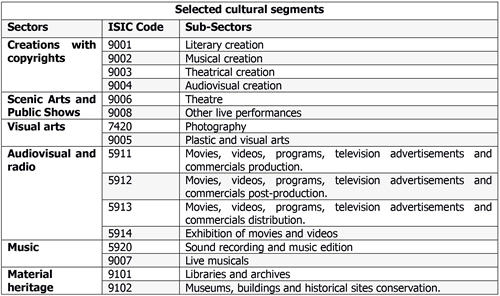
doi.org/10.15198/seeci.2020.52.149-169
RESEARCH
DIGITAL COMMUNICATION IN MICRO AND SMALL BUSINESS: THE CASE OF THE CULTURAL SECTOR IN THE COLOMBIAN DEPARTMENT OF BOLIVAR
LA COMUNICACIÓN DIGITAL EN LAS MICRO Y PEQUEÑAS EMPRESAS: EL CASO DEL SECTOR CULTURAL DEL DEPARTAMENTO COLOMBIANO DE BOLÍVAR
A COMUNICAÇÃO DIGITAL NAS MICRO E PEQUENAS EMPRESAS: O CASO DO SETOR CULTURAL DO DEPARTAMENTO COLOMBIANO DE BOLÍVAR
Ledy Paola Armírola Garcés1
María Teresa García Nieto1
Gina Claudette Romero González1
1Complutense University of Madrid. Spain.
[1] Ledy Paola Armírola Garcés: Comunicadora social. Master en Desarrollo Social. Master de Sciences Humaines Et Sociales, Mention Sciences De L’Education. Doctoranda en Comunicación Audiovisual, Publicidad y Relaciones Públicas de la Universidad Complutense de Madrid. ledyarmi@ucm.es
Funding:
This research is financially supported by the CEIBA Foundation, through the Bolivar Gana con Ciencia Program. This article is part of the Innovation Projects of the Complutense University of Madrid “University and Society: communication and integration in businesses and institution, and nonprofit organizations”, with the reference numbers No. ref. 281 (2016-2017) / No. ref. 176 (2017/2018) / No. ref. 193 (2018/2019) / No. ref. 330 (2019/2020).
ABSTRACT
Managing online presence has become a fundamental activity in business communications over the last two decades. This research explores digital communication in cultural companies in the Colombian department of Bolivar. The objective was to find out how these companies manage web presence in their communications management and which are the most used social networks. To this end, a description of their socio-economic profile was made and a qualitative approach was taken, through in-depth interviews, to find out about the experiences of ten companies belonging to various cultural sectors. The results show that most of these cultural organizations respond to the structure of small business, are geographically concentrated in the capital and are in a context of vulnerability,
conditioned by labor uncertainty and low income. Cultural entrepreneurs consider communication important, but do not see it as a priority. Consistently, small businesses do use social networks as channels of communication with their audiences, due to their low costs and the use of their advantages. However, their use is based on the intuition and experience of the entrepreneurs, rather than on strategic planning. Facebook and Instagram are the most frequently used social networks.
KEYWORDS: Communication, cultural industries, small business, social networks, Internet, department of Bolívar, Colombia
RESUMEN
Gestionar la presencia web se ha convertido en las últimas dos décadas en una actividad fundamental dentro de las comunicaciones de las empresas. Esta investigación explora la comunicación digital en las empresas culturales del departamento colombiano de Bolívar. El objetivo es conocer cómo estas empresas manejan la presencia web en su gestión de comunicaciones y cuáles son las redes sociales más utilizadas. Para esto se hizo una descripción de su perfil socioeconómico y se realizó un acercamiento cualitativo, mediante entrevistas en profundidad, para conocer las experiencias de diez empresas pertenecientes a varios sectores culturales. De los resultados se desprende que la mayoría de estas organizaciones culturales responde a la estructura de microempresas, están concentradas geográficamente en la capital y se encuentran en un contexto de vulnerabilidad, condicionadas por la incertidumbre laboral y bajos ingresos. Los empresarios culturales consideran importante la comunicación, pero no la ven como una prioridad. En coherencia, las micro y pequeñas empresas sí utilizan las redes sociales como canales de comunicación con sus públicos, por sus reducidos costos y el aprovechamiento de sus ventajas. Sin embargo, su uso se fundamenta en la intuición y experiencia de los empresarios, más que en la planificación estratégica. Y son Facebook e Instagram las redes sociales más frecuentemente utilizadas.
PALAVRAS CHAVE: Comunicação, indústrias culturais, pequenas empresas, redes sociais, Internet departamento de Bolívar, Colômbia
RESUMO
Gerenciar a presença na web tornou-se uma atividade fundamental nas últimas duas décadas dentro das comunicações das empresas. Esta pesquisa examina a comunicação digital nas empresas culturais do departamento colombiano de Bolívar. O objetivo é conhecer como estas empresas gerenciam a presença web na sua política de comunicações e quais são as redes sociais mais utilizadas. Para isto foi feita uma descrição do perfil socioeconômico e se fez uma abordagem qualitativa, usando entrevistas em profundidade, para conhecer as experiências de dez empresas pertencentes à vários setores culturais. A partir dos resultados se conclui que a maioria destas organizações culturais são microempresas, estão concentradas geograficamente na capital e se encontram em um contexto de vulnerabilidade, condicionadas pela incerteza laboral e baixa renda. Os empresários culturais consideram importante a comunicação, mas não é percebida como prioridade. Coerentemente, as micro e pequenas empresas utilizam as redes sociais como canais de comunicação com seus públicos, pelos custos reduzidos e porque se aproveitam das suas vantagens. No entanto, seu uso é baseado na intuição e na experiência dos empresários, mais do que no planejamento estratégico. E são Facebook e Instagram as redes sociais que são usadas mais frequentemente.
PALAVRAS CHAVE: Comunicação, indústrias culturais, pequenas empresas, redes sociais, Internet departamento de Bolívar, Colômbia
Correspondence:
Ledy Paola Armírola Garcés. Complutense University of Madrid. Spain. ledyarmi@ucm.es
María Teresa García Nieto. Complutense University of Madrid. Spain. nieto@ccinf.ucm.es
Gina Claudette Romero González. Complutense University of Madrid. Spain. giromero@ucm.es
Received: 30/03/2020
Accepted: 14/05/2020
Published: 15/07/2020
How to cite this article:
Armírola-Garcés, L. P., García-Nieto, M. T. & Romero-González, G. C. (2020). Digital Communication in micro and small business: the case of the cultural sector in the colombian department of Bolivar. [La comunicación digital en las micro y pequeñas empresas: el caso del sector cultural del departamento colombiano de Bolívar]. Revista de Comunicación de la SEECI, (52), 149-169.
doi: http://doi.org/10.15198/seeci.2020.52.149-169
Recovered from http://www.seeci.net/revista/index.php/seeci/article/view/637
1. INTRODUCTION
Organizational communication requires an interdisciplinary view, and in order to understand its complexity, it is essential to deem organizations as economic and social structures. This study examines digital communication in cultural industries (from now on “CIs”) of the Bolivar Department, seeing them as organizations whose main purpose is: “The production or reproduction, promotion, dissemination and/or commercialization of goods, services and cultural, artistic or heritage content activities” (United Nations Educational, Scientific and Cultural Organization [UNESCO], 2011, p. 17). CIs are the bet for progress of undeveloped countries, especially of Latin-America and the Caribbean (Luzardo, De-Jesús and Pérez-Kenderish, 2017), and form an increasingly relevant sector in the knowledge economy (Gdaniec, 2000). According to Cantillo, Rodríguez and Suárez (2018) entrepreneurships related to the orange economy (cultural and creative industry) in Latin-America are presented as an opportunity for the least favored populations of the region, since a great deal of the cultural supply has not been explored, which opens a field to promote businesses with a social touch on digital settings. However, the mapping carried out by Lázaro and Luzardo (2018) concludes that there is a need for strengthening research and data gathering related to creative economy in Latin-America and the Caribbean that allow making strategic decisions based on knowledge and accelerate innovation in the cultural sector.
CIs are one of the sectors with the greatest economic projection in the country. According to the Ministry of Culture and the “Andrés Bello” Convention (2003), Colombia has an audiovisual flourishing industry and a cultural microbusinesses network that boost local economies with a wide offer, such as editorials, discographies, theater and dancing. This projection of the cultural sector resulted in the 1834 Law of 2017 or Orange Economy Law being enacted, whose objective is to foster, promote and consolidate CIs in the country. According to the numbers of the National Administrative Department of Statistics ([ES: Departamento Administrativo Nacional de Estadística] DANE, 2019) the added-value generated by the productive sectors that are part of the CIs such as editorials, audiovisuals, phonographic, etc., amounts to 7347 million Colombian Pesos (approximately €1.740.009).
In accordance with DANE (2018) the Culture Satellite Account (CSA) shows that audiovisual, books and publications, cultural education, advertising design, music and scenic arts areas lead CIs in Colombia and are responsible for the greatest creation of employment in this sector. The importance of CIs for the development of the country is undeniable. Therefore, it is deemed relevant to focus these researches on the analysis of the needs of the businesses in this sector, since their results will allow knowing the characteristics of these organizations and establishing guidelines for designing and creating programs and projects.
Through the first part of the article we present a theoretical approach of organizational and digital communication, define the socio-economic context in which this research is framed and describe the current panorama of the cultural sector of the Bolivar Department. With the results and discussion, we present our view about communication, online presence and especially the use of social media in businesses. Finally, we portray a panorama about the use of digital communication in the conclusions.
1.1. Communication in organizations
In general terms, a business or organization can be defined as a group of people who work together towards the same project under a common structure. Hellriegel, Jackson and Slocum affirm: “An organization is a formal group of people who operate in order to achieve specific goals” (2017, p. 6). For their part, Ferrell, Hirt, Ramos-Garza, Adriaenséns-Rodríguez and Flores-Cárdenas define a business this way: “Individuals or organizations that intend to obtain profit by offering products which satisfy the needs of people” (2004, p. 4). And Robbins, Decenzo and Coulter (2013) point out that organizations have three defining characteristics: goals or common purposes, people who work actively to achieve those goals and turn them into accomplishments, and a common system that determines the rules, functions and guidelines for behavior within the organization.
Communication has a key role for the correct functioning of organizations. In this sense and in accordance with Ducker (2008), the main problems of businesses are related to the inadequate management of communication, fundamental for the motivation of the personnel and the generation of new knowledge. In this regard, López (2014) assures that business management must understand communication as an integral part of all the processes. However, the implementation of strategic plans is not enough, it is also necessary that each one of the members of the company becomes aware about its importance.
Communication in organizations must be a systematic process aimed at achieving the business goals, in which elements such as identity, values, corporate image (Rincón-Quintero, 2014), principles, mission and vision of the organization are integrated. Therefore, designing a communication plan that provides answers to the needs of the organization, and especially the ones of the audiences, is essential.
In this sense, Tur-Viñes and Moserrat-Gauchi (2014) state that the creation of a good communication plan must take into consideration the following aspects: a) analysis and diagnosis of the situation, b) to determine some objectives, c) to choose some strategies, d) to define execution plans addressing budgets, activities and times, and e) finally, an examination to analyze the accomplishment of goals proposed in order to make adjustments and modifications.
Communication “must be consistent with the philosophy of the organization in order to optimize its functions and promote success in their results” (García-Nieto, 2012, p. 127). Therefore, the implementation of a good communication strategy in the relations with audiences is indispensable for the accomplishment of the objectives of the company. And in order to develop truly effective communication plans, it is essential to identify the targets of the organization and establish the appropriate tools and channels in their internal and external communications.
In any case, it must be clear that communication management is a managerial function aimed at achieving the best relations with audiences. Also, the management of excellent Public Relations is characterized by their participation, and the participation of senior management, in strategic administration, the in-depth knowledge in the field from whoever is directing it and the integrated functions of internal and external communications, as well as the autonomy in the area in order to make strategic decisions (Grunig, Grunig and Aparecida-Ferrari, 2015). Effective communication improves interpersonal ties, increases commitment and facilitates the introduction of changes to the members of the organization (Ludlow and Panton, 1997).
Communication and innovation go hand in hand. Creativity, essential for resolving conflicts, becomes a necessary skill in strategic communication (Nosnik, 2001). Learning and sharing ideas is essential in order to generate innovation (Nonaka, 2007). In the 21st century, the big challenge for companies is to take advantage of the communication tools available to manage knowledge among their work teams, to innovate and to be more competitive. Especially in this current digital environment, organizations must learn how to administer that knowledge “generating it, storing it, recovering it, using it and checking it in an effective and productive way” (Peiró and Bresó, 2012, p. 44). However, the size of the company determines the direction communications take. That way, the big and medium ones have skilled and capable human teams, based upon the needs of the company; while the small and micro ones (SMBs ) are characterized by the fact of the direction of communication resting on the general leader or the owner.
In this context, ICTs play an outstanding role. Some studies show the existing relation between the use of ICTs and the improvement in business competitiveness (Castellanos, Loaiza and Cuestas, 2016; Rubio and Aragón, 2006; Sinkovics, Bell and Deans, 2004). And reports, such as the one from the United Nations Economic Commission for Latin America and the Caribbean (ECLAC), describe how in undeveloped countries the adoption of ICTs by small and medium businesses help develop their administrative and commercial management, and reduce production costs, in addition to facilitating communications and access to information (Ueki, Tsuji and Cárcamo, 2005).
It is important to bear in mind that organizational communication has been changing progressively, now mobile phones permanently connect businesses to their audiences, clarifying their doubts with just a click (Feijóo-González, Gómez-Barroso and Martínez-Martínez, 2010). Contents emerge and are disseminated on the Internet, and businesses face the challenge of keeping updated and having strategic presence on the web if they want to stay successful (Castells, 2002; Serrano-Cobos, 2016). From the beginnings of the so-called web 2.0 or social web, SMBs have had the option of accessing and using multiple interactive platforms to carry out their communication management. According to Olguín, González and Guerrero (2014) companies must take advantage of these virtual platforms in order to create ties with their target markets, which are using more and more social media to stay informed and to communicate about what they are interested in. In this sense, Jordan, Arias and Sananiego (2017) explain how the Internet has encouraged consumers, in addition to being recipients of information, to be also producers capable of disseminating contents.
Available platforms for companies and users comprise social webs like Facebook, LinkedIn, Instagram, YouTube, Twitter, WhatsApp messaging, Skype, Line or Telegram, blogs and diverse systems to create webpages. Among social media, Facebook stands out with more than 2271 million active users worldwide (We Are Social and Hootsuite, 2019) not only offering a free and relatively easy to use interactive web for companies, but additionally making tools available to create webpages or commercial campaigns at a low cost, with the option of segmenting their target markets and accessing huge databases (Facebook Business, 2019).
Clients are present on social media. This is why communications must be focused on planning and managing strategically the presence of the brand on the Internet today more than ever. Communication based on the “electronic word of mouth” of social media is related to how clients perceive the brand (Sarmiento and Rodríguez, 2018). For Galvis-Ardila and Salva-Agudelo “the history of a company on the web and what has been said about it throughout time is what matters in the so-called online reputation” (2016, p. 204). In this sense, the study carried out by Sánchez, Fernández and Mier-Terán (2019) reveals that a greater perception of benefits from clients generates a greater commitment towards the company. Therefore, the company should take advantage of the use of social media to generate attractive content in response to the interests of its users.
As aforementioned, SMBs has diverse alternative platforms available to manage their digital communications and online presence, which facilitates its business administration and establishing relations with their audiences.
1.2. The cultural sector of Bolivar: an opportunity for progress.
Located in the north of the country, Bolivar is one of the 32 departments of the political-administrative divisions of Colombia (DANE, 2017). A department rich in natural and hydrological assets, whose economy is based upon tourism focused on the capital Cartagena de Indias and on slightly technified agronomical industries in rural zones (Pérez-Valbuena, 2005).
The Bolivar Department is divided into six Zones of Economic and Social Development (ES acronym: ZODES) these are Magdalena Medio, Loba, Depresión Momposina, Mojana, Montes de María and Dique, which have 45 municipalities and one capital district (Bolivar Governorship, 2016). Bolivar had 4.2% of the Gross Domestic Product (GDP) of Colombia and it stood out for being the department with the highest growth of the country in 2016 (DANE, 2017). Following the national initiatives, the strengthening of CIs has also been promoted in this department, especially those which are closely related to the tourism industry. According to the diagnosis conducted by Acosta (2011) the most prominent cultural sectors in Cartagena are: advertising, leisure and sports promotion, and a great diversity in the supply of products and services from creative industries with a significant potential for growth; although the majority of these businesses exhibit high informality, and administrative and financial weaknesses.
For their part, the research about entrepreneurship conducted by Espinosa-Espinosa, Abello-Vives, Ruz-Rojas and Alvis-Arrieta (2012) concludes that, in Cartagena, cultural entrepreneurs are vulnerable workers, having low incomes and their family’s maintenance depends on their jobs, additionally to lacking a contract and social insurance which further increases their occupational hazards.
Support has been given to the cultural industry from the public sector through the execution of great festivals in the municipalities, such as the Jazz Festival in Mompox or the Bands Festival in Cartagena, and the reactivating of other events and festivals throughout the whole department with the purpose of consolidating tourism supply and promoting the creation of products and services focused on culture and nature (Bolivar Governorship, 2016; Bolivar Institute of Culture and Tourism [ES acronym: Icultur], 2019).
However, the research carried out by Ruz (2019) reflects the existence of important weaknesses in the management and organization of the festivals which take place in Bolivar, and there is also the need of promoting the integral development of the capacities from both managers and organizations in order to strengthen the cultural industry and, that way, taking advantage of the emergent productive opportunities around these events. It is clear that the cultural industry suffers from noteworthy weaknesses; however, it exhibits huge opportunities for the construction of a more solid and with future growth business network.
2. OBJECTIVES
There are three objectives in this study:
The socioeconomic circumstances of cultural businesses in Cartagena de Indias and in the north of Bolivar were previously described.
3. METHODOLOGY
This research is addressed from a qualitative approach due to the necessity of seeing businesses of the cultural industry as social organizations immersed within complex environments which require a closer, detailed and compressive observation about how they develop their activities, especially those related to their digital communications.
On the one hand, we conducted a documentary exploration to discover the socioeconomic variables of organizations with information collected from the databases of the Chamber of Commerce of Cartagena (CCC). And on the other hand, we implemented the in-depth interview technique. We interviewed businesspeople in order to know the communicative practices of their organizations through their experiences, opinions and perceptions about the use of web and social media platforms.
According to Hernández, Fernández and Baptista (2014) each interview was unique and had the purpose of generating a flexible dialog in which interviewees felt comfortable with telling their experiences to delve into different topics and thus to offer a wide and detailed perspective about the subject under analysis.
In order to identify the cultural segment of businesses, we used as reference the Culture Satellite Account classification, a survey that measures the economic impact of the cultural industry in Colombia every two years. This classification proposes a division by cultural sectors and sub-sectors, according to the Classification codes of the International Standard Industrial Classification of all Economic Activities (ISIC) (DANE, 2018). Taking into account the findings from previous researches (Acosta, 2011; Espinosa-Espinosa, Abello-Vives, Ruz-Rojas and Alvis-Arrieta, 2012), six sectors and sixteen sub-sectors were chosen in the Bolivar Department, based upon their relevance in the progress of the cultural field (see Table 1).
Table 1. Chart of the sectors and sub-sectors selected for this research, with the identification of the ISIC code, Rev. 4 A.C.

Source: created based upon Culture Satellite Account (DANE, 2018).
The choosing of the companies was carried out basing on the databases of the businesspeople registered in the CCC in 2018, gathering the highest number of commercial registers of the companies of Bolivar, which entailed the necessary acquisition of the rights of use of their data for academic purposes.
We carried out the socioeconomic categorization of the businesses identifying the number, sectors, size, type of enterprise and the municipalities in which these operate. Ten companies were chosen randomly and the in-depth interviews to their representatives were conducted. The interviewees provided revealing explanations about two fundamental issues: the communication planning and the use of webpages and social media.
DISCUSSION
4.1. Characteristics of the businesses
The characteristics of the businesses and people interviewed are described in table 2; the answers of the businesspeople about online presence related to having a webpage and social media are detailed hereunder.
Table 2. Characteristics of businesses interviewed.
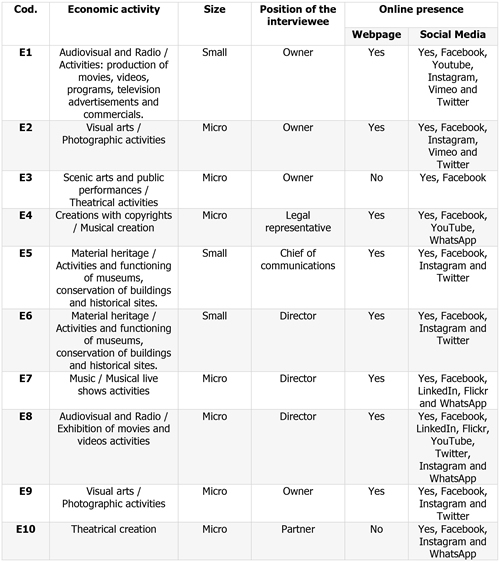
Source: authors’ own creation.
The majority of these businesses have a webpage and presence on social media. The most used social media are Facebook, Instagram and YouTube. Among the messaging services the most outstanding one is WhatsApp, which has been established as a revelation for companies, by becoming a fundamental and functional tool for communication with both their internal and external audiences.
4.2. Cultural businesses socioeconomic profile
The number of businesses registered in the CCC belonging to the chosen cultural segments is 212. Most of them are in the music sectors (29%), visual arts (19%), creations with copyrights (18%), scenic arts and shows (16%), followed by audiovisual and radio (12%), and material heritage (6%). See figure 1:
Source: authors’ own creation.
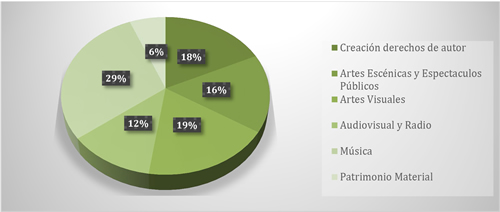
Figure 1. Percentage distribution of businesses registered in the CCC
According to their sizes, the majority of these companies meet the microbusiness format -96%-. 3% are small, and the big and medium ones only represent 1% (see figure 2).
Source: authors’ own creation.
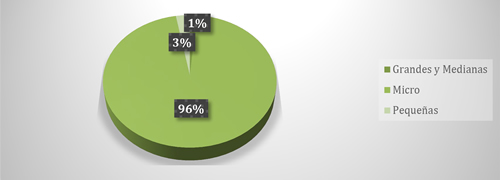
Figure 2. Percentage distribution according to the size of the company
Basing on their juridical nature, 49% of these organizations were established as personal companies, 30% are simplified joint-stock companies, followed far behind by foundations (7%), corporations (6%), associations (4%), private limited companies (3%), and other forms (1%). See figure 3.
Source: authors’ own creation.
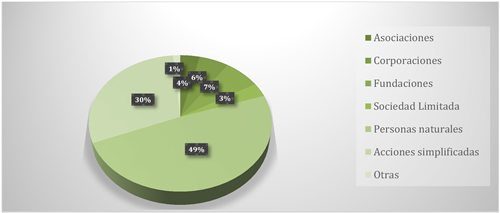
Figure 3. Percentage distribution of businesses according to the type of Enterprise
The location of the headquarters of these organizations show that 91% of the businesses registered are in Cartagena, capital of the department, while the other 9% are located among the different municipalities, which reflects the existence of a great concentration and an important gap in the department (see Table 3).
Table 3. Registered businesses distribution; by municipality and Economic and Social Development Zones [ES acronym: ZODES] where they carry out their commercial activity.
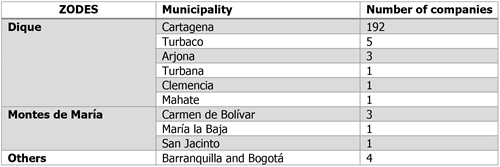
Source: authors’ own creation.
4.3. Communication planning
Businesspeople deem communication as one of the essential aspects for the right functioning of their organization and define it as every action taken in order to make their company known. They recognize the significance of planning their identity and corporate image and express having very limited knowledge, rather than specific, about their audiences.
However, the majority of businesses do not have a specific direction in communication or a person responsible exclusively in charge of doing this job. The person who deals with communication is most of the times the same one who administers the commercial area and frequently leads the company. This structure is decisively influenced by financial limitations.
Businesses implement several public relations strategies, such as corporate alliances and attention to the media (Seitel, 2002; Ramón and Segovia-López, 2016). But they do so without following a strategic plan of communication: “We have some marketing knowledge and we make plans, but nothing written or rigorous” (E1, personal interview, July 26th, 2018). “As a business administrator, we do everything in an artisanal manner because I did not go to college” (E2, personal interview, July 27th, 2018).
Only two businesspeople stated having a plan designed based upon their needs, either because they have a person directing their communications or because they outsource the service. It is clear that communication is not a priority for these businesses, even if it should be the guiding principle for all the strategic decisions of the organization (López, 2014).
The majority of businesspeople lack specific training in communication. In spite of this, they have been interested in creating strategies and alliances with other media businesses or similar ones in order to position their brand. “We advertise the company through agreements; we have teamed up with a shopping mall and we display our advertisements on their screens through an exchange” (E1, personal interview, July 26th, 2018). These types of communicative actions generate credibility and reinforce the trust audiences put in them, achieving greater persuasive effectiveness, in addition to being significantly cheaper than outsourcing advertising means (Palencia-Lefler, 2011; Rojas-Orduña, 2005).
4.4. Use of a webpage
A webpage becomes a fundamental and useful communication tool to establish relations with their external audiences, especially to make their products and services known. “All of our services are advertised on a webpage and we have always had a webpage” (E1, personal interview, July 26th, 2018). “A webpage is really important, although it is not as much as it was before, it is important because of Google” (E9, personal interview, August 16th, 2018).
Businesspeople acknowledge websites as the main communication platform to show the data and most relevant aspects of their companies; and it is confirmed to be indispensable tools for communication and the strengthening of public image (Guzmán-de-Reyes, López-Jiménez and Aguilera, 2006; Moreno and Capriotti, 2006). However, to use a webpage entails some inconveniences such as costs and difficulties for its maintenance. “They charge you with money for designing the website. After that, you have to pay the domain, and when you add them up, you have to decide whether you do this or you do that” (E3, personal interview, July 12th, 2018).
The majority of businesspeople have a webpage, although some of them think their maintenance is expensive and impractical in contrast to the facilities they have found in the management of social media, which are attributed with the same benefits. The aspects that make the management of a webpage difficult are administrating the contents, writing, lack of knowledge about programming language, the necessary software updates, and the time required to manage it.
4.5. Use of social media
Social media play a primary role for these companies. They post contents on them, make their products and services known, schedule events and mainly interact with their audiences. The use of social media enables companies to keep their contacts, chat with theirs audiences and receive information in real time, essential to make decisions (Dans, 2007); with the added advantage of low costs and the maintenance of databases of clients (Galvis-Ardila and Silva-Agudelo, 2016).
One of the things that make these organizations unique is the decentralization of their work team. Some do not even require headquarters or an office and the personnel is hired to work hourly or as consultancy collaborators. This circumstance makes the control of internal communication difficult.
It has been proven that these businesses participate actively in the global movement characterized by the generalized use of mobile applications in the entrepreneurial field (Jamaluddin, Rafidah, Nurul, Roszaini and Li, 2014; Modak and Mupepi 2017). Such process derives from the facilities provided by applications, by integrating multimedia content which invigorates conversations and the interaction with their audiences (Gestión Pyme, 2017). WhatsApp also has an impact as a business catalyst due to its high market penetration with 1600 million subscribers worldwide (We Are Social and Hootsuite, 2019). Messaging service through WhatsApp has been essential to respond to the communication demands these companies have. One of the aspects businesspeople highlight it the easiness of creating groups, by which they can send messages, photographs, advertisements or links which allow them to maintain a clear and fast communication with their audiences, and all of this through a mobile phone.
For their part, Instagram and Facebook are the social networks preferred by those who work in the audiovisual sector. These networks have been fundamental in order for them to make their work known and grow commercially: “Now sales occur more on networks, through Instagram, through Facebook (…) because everything is there” (E2, personal interview, July 27th, 2018). “Facebook, YouTube and the e-mail have permitted us to clearly strengthen and increase the promotion of our musical project” (E4, personal interview, July 15th, 2018).
Virtual communities and the growing interest in online reputation are some of the concerns these businesspeople express: “People always write on Instagram and Facebook, mainly. This is essential because you are not meeting face to face with a person via virtual communities, but it is a way of communicating” (E5, personal interview, August 14th, 2018). In spite of this, some of them acknowledged not making much progress in this process and they explained why: “I would tell you we are not up to date with technologies because they are worth money and we do not have someone here who helps us or finances technology for us, so I admit that we fell far behind in this matter” (E6, personal interview, August 14th, 2018).
Interaction, quickness, low costs and a great scope of audiences in a short time, are some of the advantages of using social media and their importance in communication with audiences is confirmed.
5. CONCLUSIONS
The databases analysis showed that businesses in the cultural industry of Bolivar are mainly microbusinesses, which determines their administrative characteristics, as well as their financial and organizational weaknesses.
This research confirms that digital communication in micro and small businesses has been essential for the development of their activities, since, in addition to facilitating the labors related to communication, it helps reducing costs, and optimizing time and resources available. Not only has the Internet provided a place to promote their products and services, but also the possibility of developing alternative propositions based upon the use of tools offered by the different platforms and social media on the web.
Businesspeople are aware of the value of planning communication and the significance this has for their entrepreneurial growth, but they lack communicative strategic plans due to the absence of specialized training.
As for online presence, a webpage is the flagship platform to show their corporate identity on the web, but businesspeople expressed clear difficulties when updating and using them proactively due to their costs and complexity. Companies use social media like Facebook and Instagram as communication channels and they disseminate information, images, news, events, products, services and interact with their audiences on them.
WhatsApp messaging service has become a major tool in the administration of these companies due to its quickness, dynamism and reliability. WhatsApp even started being used as an internal communication tool and to communicate with external audiences more and more.
The lack of strategic planning in communication, which prevents achieving the best relations with audiences and entrepreneurial objectives, is going to be overcome by these companies in the cultural sector of Bolivar by the time they receive the funds and resources necessary. Businesspeople are already prepared for it. It is proven by their wonderful keenness to learn and their interest in obtaining the competencies and skills that strategic direction of communications requires.
AUTHORS
Ledy Paola Armírola Garcés
She is a Social Communicator from the University of Cartagena, has a Master’s Degree in Social Development from the University del Norte, Barranquilla, and a Master’s Degree in Human and Social Sciences, Education Sciences Mention from University of Paris XII Val de Marne. She is a Doctoral Candidate in Audiovisual Communication, Advertising and Public Relations at Complutense University of Madrid (UCM). She has worked in development research projects with different organizations such as the International Organization for Migration (IOM) or the Environmental and Childhood Action Fund [ES: Fondo para la Acción ambiental y la Niñez] with topics like human trafficking, early childhood and African descent. Her lines of research are development, environment, culture and information and communication technologies.
ledyarmi@ucm.es
Orcid ID: https://orcid.org/0000-0003-0327-814X
Google Scholar: https://scholar.google.com/citations?user=Q0c25g0AAAAJ&hl=es
ResearchGate: https://www.researchgate.net/profile/Ledy_Armirola_Garces
María Teresa García Nieto
She is a titular Professor of the Complutense University of Madrid (UCM). She has a PhD. in Information Sciences, a Degree in Political Sciences and Sociology, and in Advertising and Public Relations; she has a Master’s Degree in Corporate and Advertising Communication from the Complutense University of Madrid, has been vice-dean of the Faculty of Information Sciences and director of the Degree in Communication at the Higher Studies Center Felipe II of the UCM. She is author of numerous publications, leading researcher of research, transference and innovation competitive projects, and director of doctorate theses, two of which obtained extraordinary prizes.
nieto@ccinf.ucm.es
Orcid ID: https://orcid.org/0000-0002-6235-511X
Google Scholar: https://scholar.google.com/citations?user=H_KabaoAAAAJ&hl=es
ResearchGate: https://www.researchgate.net/profile/Maria_Teresa_Garcia_Nieto
Gina Claudette Romero González
She is a Social Communicator from the University of Cartagena, Specialist in Television from the Pontifical Xavierian University of Bogotá; she has a Master’s Degree in Communication in Organizations from the Complutense University of Madrid (UCM). She is a Doctoral Candidate in Audiovisual Communication, Advertising and Public Relations of the same university. She has training and experience at communication direction, basic research applied to strategic communication management, social responsibility, reputation and other intangible ones, with a multi-stakeholder approach. She has managed projects for different cultural organizations and has worked as General Producer at the Cartagena Film Festival (FICCI) in several editions, etc.
giromero@ucm.es
Orcid ID: https://orcid.org/0000-0002-2851-6194
Google Scholar: https://scholar.google.com/citations?user=W__NPz8AAAAJ&hl=es
ResearchGate: https://www.researchgate.net/profile/Gina_Romero_Gonzalez
[1] Microbusinesses in Colombia are characterized for having from one to a maximum of ten workers or having total assets under 500 currently legal monthly minimum wages (ES: SMMLV), while small businesses are characterized for having from eleven to fifty workers or total assets under 5000 monthly minimum wages (Decree No. 957, 2019).